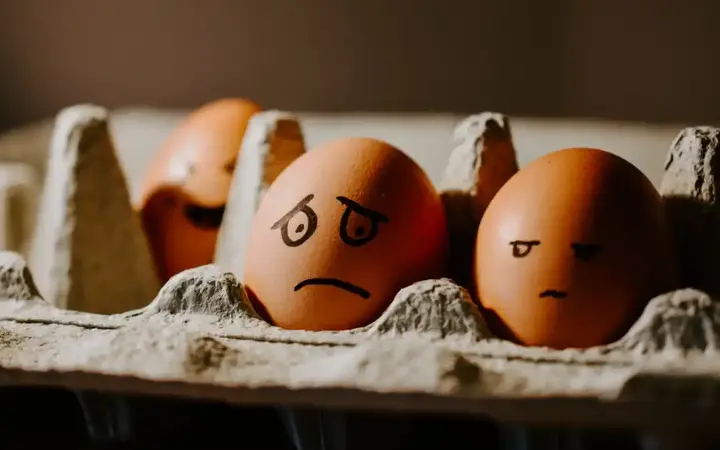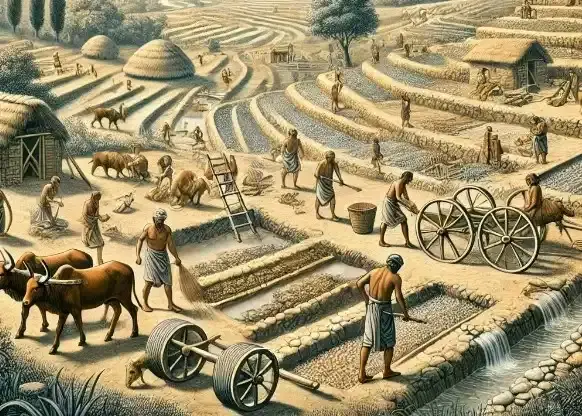Medical foods in Vietnam: amazing, embarrassing, and puzzling
Food nourishes. But food can also be poisoned. There is an old strange belief in Vietnam that says something like this: "Eating chicken with Vietnamese lemon mint leaves can cause a leprosy-like disease." The truth is that when you eat chicken and lemon mint mixture this will not make you chronically sick, but it can lead to a special kind of nausea and itching that no one wants to deal with. This is just one piece of advice from the school of nutritional therapy, where cuisine meets medicine, a practice deeply rooted in ancient Chinese medicine. While some of these ideas have been refuted as pure myth, others are still cherished and practiced, whether in the office of an oriental doctor or the kitchen of a chef.
Recommend
Show key points
- In Vietnam, traditional culinary beliefs suggest certain food combinations, like chicken with lemon mint leaves, may cause discomfort despite lacking scientific backing.
- Dietary therapy in East Asia is deeply influenced by ancient Chinese medicine, especially the yin and yang philosophy that aims to balance energetic forces in the body.
- Foods are categorized as either yin or yang based on their temperature and effects, and their combination is crucial to maintaining bodily harmony.
- ADVERTISEMENT
- The Five Elements theory complements yin-yang by linking natural elements to organs and flavors, promoting balance through mindful consumption.
- Although traditional medicine is not taught in formal education in many Asian countries, its legacy persists through cultural practices and specialized study.
- The boundary between traditional and Western medicine remains contentious, particularly in critical illnesses like cancer, leading to mixed guidance and public confusion.
- A growing interest in medicinal foods among the youth, especially in China, reflects a broader awareness of holistic health practices centered around food.
Yin and Yang philosophy

The concept of yin and yang is the core philosophy in every aspect of traditional East Asian culture and society. They are opposing and complementary forces of energy. Yin is feminine and receptive, while yang is masculine and active. The yang expands and dominates, while the yin remains steady and stable. In the food world, yang is cold, while yang is hot and warm. Besides neutrality, these five basic temperaments form dietary therapy. Some yang foods include red meat, potatoes, carrots, herbs and spices (ginger, garlic, onions...). On the other hand, yen foods include leafy greens, tofu, cucumbers, watermelons, and more. The balance of yin and yang is the ideal state for the existence and prosperity of the body. If one energy is missing, you need to insert the other to restore balance. This principle often applies to how to pair ingredients to form a harmonious dish. Seafood, in general, is "cold", therefore, you need to supplement it with something "spicy". Chicken meat, which is a "warm" food, but is often served with another "warm" appetizer: lemon leaves. Many Westerners may be familiar with this ingredient through Thai curry, but in Vietnam, it is known as thinly sliced lemon leaves, which are sprinkled over steamed chicken. The most common way to prepare chicken in Vietnam is not frying but boiling (or steaming), as this method is believed to preserve its tenderness and nutritional value.
Five elements in the life cycle
Based on yin and yang, the concept of the five more complex elements (or five factors, 五行) takes it further. The system consists of metal, wood, water, fire and earth, creating an optimal cycle of reproduction and destruction.
Water feeds the wood but extinguishes the fire.
Fire creates ash, which enriches the earth, but melts and destroys metal.
The metal evaporates and creates water, while the metal blade may cut the wood.
Wood enhances the power of fire, but depletes nutrients from the ground.
The earth unites minerals to form the metal, but prevents water from flowing freely.
Basically each element has the ability to activate one element and annihilate another. You are not immune to things or completely helpless. The Five Elements course offers a sophisticated and straightforward way to present nature, culture, medicine, military strategy and human life.
In traditional Chinese medicine, the five elements are represented as follows:
The mineral is permeable (spice or heat), located in the lungs and large intestine.
Wood is acidity, located in the liver and gallbladder.
Water is saline, located in the kidneys and bladder.
Fire is a gallbladder, located in the heart and small intestine.
The dirt is sweetness, located in the spleen and stomach.
In general, excessive intake of any kind of food or flavor can strain the corresponding organ.
The embarrassing situation in modern society

Blurred vision and dizziness can be caused by a lack of blood flow to the liver, affecting the eyes. In most East and Southeast Asian countries, traditional medicine is not part of the compulsory formal curriculum.Biology courses follow the same scientific guidelines for vitamins and anatomy as in the West. Oriental medicine is intended for specialized college programs or is passed down in families who have practiced it for a long time. For most of us, our knowledge hinges at the yin and yang rule. We said earlier, that this is not about using food as a real medicine. But it is believed that the use of food to nourish the body in the extreme summer heat or severe winter cold is necessary. But when it comes to treating serious cases, there is not enough knowledge to explain them, let alone judge them. But where do the boundaries mix? In Vietnam, there is constant talk about what to do when diagnosed with cancer: follow the Western medical path or follow the traditional path? This discourse is not limited to Eastern countries – just replace the "traditional" with the "alternative". Attention: If you Google "cancer" and "traditional medicine" together in Vietnamese, you will find a lot of warnings, sad stories, and articles begging people to see the right doctor. When choosing the Western way, it is clear. Apart from occasional fatigue, mild cramps, and loss of appetite, you're fine, but your white blood cell count sometimes fluctuates to dangerously low levels.
So what should you eat?
In Vietnam, traditional medicine occupies a strange space – deeply ingrained in the collective unconscious of the people, yet ignored or hidden in a small, gated community. The public rarely learns about them correctly and systematically, leading to their overuse or abuse. In China, there is a rise in interest in medicinal foods, especially among younger generations (although many focus on anti-aging). However, this revival comes with a positive development: food, after all, is life. When you practice diet therapy deliberately, you naturally become more aware of your exercise habits, mental well-being, and work-leisure balance.
![]()
Did you know that there are two definitions of time and they do not agree!
Time feels steady and always moving forward, but Einstein showed it's actually relative—different for observers moving differently. Strangely, the universe's laws don’t favor time’s direction, yet we only see it go forward. This might be tied to entropy always increasing, revealing a deep link between time’s arrow and thermodynamics. more- ADVERTISEMENT
![]()
75% of the global diet is produced by just 12 plants and 5 different animals
75% of the global diet is produced by just 12 plants and 5 different animals more- ADVERTISEMENT
![]()
Success Guide - How to tame anxiety, stress and work stress?
Feeling overwhelmed by anxiety, stress, or work pressure? This simple guide offers practical steps like deep breathing, walking, quality sleep, setting boundaries, and staying organized to help you cope and regain balance. Remember, small changes can make a big difference—and you're not alone. more- ADVERTISEMENT
![]()
Social entrepreneurship: How do your projects make a positive impact on society?
Social entrepreneurship is all about using innovative ideas to solve social and environmental problems while creating jobs and boosting the economy. It’s growing fast in the Arab world, especially in places like Egypt and the UAE, offering hope for a better, more sustainable future despite funding and awareness challenges. more- ADVERTISEMENT
![]()
Elon Musk - mad genius or unlimited diligence?
Elon Musk, dubbed the "Real Iron Man," is a bold, creative dreamer known for his ambition to colonize Mars, controversial tweets, and strict leadership style. Loved and hated, he's a complex figure who never shies away from challenges or attention, always pushing boundaries with fearless determination. more- ADVERTISEMENT
![]()
Secrets of academic excellence: how to achieve the highest grades with effective methods
Secrets of academic excellence: how to achieve the highest grades with effective methods more- ADVERTISEMENT
![]()
Neolithic revolution
The Neolithic Revolution more- ADVERTISEMENT
![]()
How the nearby supernova left its mark on life on Earth
SN 1181, a mysterious "guest star" seen in 1181, has finally been linked to a rare supernova type called IAX. It left behind a "zombie" white dwarf, puzzling astronomers for centuries. New computer models now align with telescope data, offering fresh insight into this unusual celestial explosion. more- ADVERTISEMENT
![]()
Alert from the Northern Lights: Sun's activity is at its highest level in 23 years with the Northern Lights
July 2024 saw a surge in sunspots—the most since 2001—boosting chances of stunning Northern Lights shows across North America. A G2 geomagnetic storm is expected this week, possibly lighting up skies as far south as New York and Idaho. Keep an eye out for those glowing waves! more- ADVERTISEMENT
![]()
Breaking the code of learning: does repetition really help?
Rote memorization—repeating facts to remember them—can help with basics like math tables or alphabets, especially in kids. But it’s often boring, lacks understanding, and doesn’t help apply knowledge in real life. While it boosts memory short-term, deeper learning methods work better for long-term success. more- ADVERTISEMENT





















